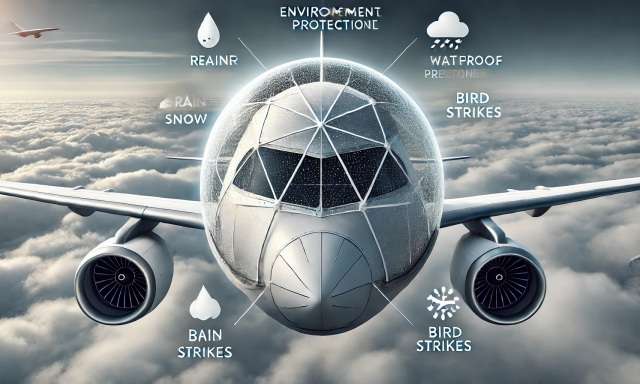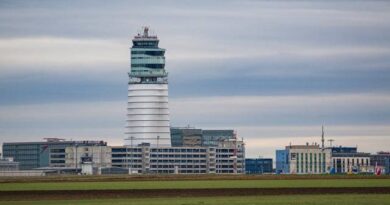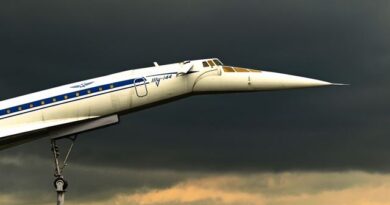Radome in Aviation: Protecting Radar Systems and Boosting Aircraft Performance
A radome is an essential component in aviation, acting as a weatherproof enclosure that protects an aircraft’s radar system. The term “radome” combines the words “radar” and “dome,” indicating its primary function of housing radar antennas. Typically positioned in the nose cone of the aircraft, radomes ensure that radar signals pass through without interference, while shielding the sensitive equipment from environmental hazards like rain, snow, bird strikes, and debris.
Key Functions of Radome:
- Radar Protection: Radomes safeguard radar systems, allowing the radar to operate efficiently even in harsh conditions. This is crucial for accurate weather monitoring, navigation, and communication during flight.
- Aerodynamic Efficiency: By streamlining the aircraft’s shape, radomes reduce aerodynamic drag, enhancing flight efficiency and saving fuel. Their sleek design contributes to the aircraft’s overall performance.
- Signal Transparency: Constructed from materials like fiberglass or composites, radomes are designed to allow radar signals to pass through with minimal attenuation, ensuring the functionality of systems used for navigation and weather detection.
- Durability and Maintenance: Radomes are built to withstand the wear and tear of flight, including exposure to extreme temperatures and moisture. They require regular inspections to maintain their integrity, as even small cracks can degrade radar performance.
- Stealth in Military Aircraft: Some radomes, particularly in military aircraft, use specialized materials to absorb or deflect radar waves, enhancing the aircraft’s stealth capabilities by reducing its radar cross-section.

Radome Design and Simulation Tools
The design of a radome involves creating a structure that is both lightweight and durable, while ensuring minimal interference with radar signals. Materials like fiberglass and composite layers are carefully selected for their radar transparency and resistance to environmental factors such as wind, rain, and high temperatures. Simulation tools play a critical role during the design process, allowing engineers to predict the radome’s electromagnetic performance and aerodynamic properties under various flight conditions. Techniques like computational fluid dynamics (CFD) and electromagnetic simulation help optimize the radome’s shape and material composition, ensuring it meets performance and safety standards before production (MDPI; Homepage Lufthansa Technik).
Case Studies associated with Radome in Aviation
- Military Radomes: General Dynamics has developed radomes that balance performance and protection for military aircraft. These radomes are crucial for housing advanced radar systems that support navigation, surveillance, and electronic warfare. A notable achievement includes radomes designed to withstand harsh environments while minimizing signal interference and optimizing the radar cross-section for stealth operations (General Dynamics Mission Systems).
- Commercial Radomes: A case involving Lufthansa Technik highlights the role of radomes in enabling high-speed connectivity in modern aircraft. Their in-house radome designs, like the TIOS+ model, support advanced satellite communications while maintaining structural integrity against environmental stressors like wind and ice (Homepage Lufthansa Technik).
- Incident Examples: In 2010, a Fokker 100 experienced radome collapse mid-flight due to undetected structural damage from moisture ingress, likely caused by prior bird strikes. This led to unreliable airspeed data and a complex landing scenario, demonstrating the critical need for thorough radome maintenance(Engineering Pilot).
These cases underscore the significance of radome design, testing, and maintenance to ensure the safe and effective operation of both commercial and military aircraft.
Conclusion
Radomes play a vital role in aviation by protecting radar systems from environmental damage while optimizing aircraft performance. Their aerodynamic design reduces drag, leading to improved fuel efficiency, while materials like fiberglass ensure radar signals pass through without interference. In military aircraft, stealth-enhancing radomes help reduce detection by enemy radar. As technology advances, radomes continue to evolve, promising even greater durability and efficiency. Their combination of protection, performance enhancement, and innovation makes them essential for safe and efficient air travel.


